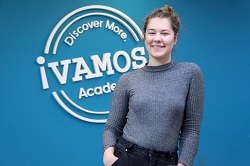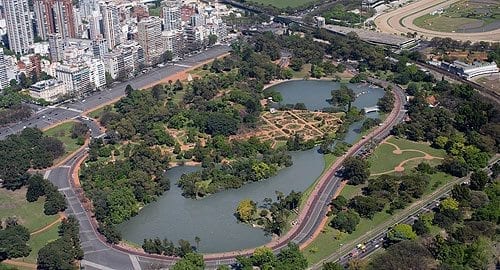With a staggering 250 verdant spaces adorning its urban landscape, Buenos Aires might just be one of the greenest capitals in South America. There’s a certain magic to the air in the best parks in Buenos Aires, where the fusion of European charm and Latin spirit come alive amidst the rustle of leaves and the murmur of city life. Whether you’re looking to find solitude beneath the shade of towering trees, take a leisurely stroll along manicured pathways, or immerse yourself in a cultural event under the open sky, the city’s top-rated parks offer a lush respite to travelers and locals alike.
START YOUR SPANISH CLASSES TODAY
- University Spanish Courses in Argentina
- Malaga Spanish Schools
- Learn Spanish in Milwaukee
- Profesores de ingles en Malaga
- Profesores de ingles en Buenos Aires
- Learn Spanish in Ottawa
- Toronto Spanish Language School
- Learn Spanish Online
- Argentina Study Visa
- Coorporate Spanish Classes
- Buenos Aires Spanish Institute
Table of Contents
- START YOUR SPANISH CLASSES TODAY
- Tres de Febrero Park: A Hub for Leisure and Nature
- Jardín Japonés: A Peaceful Japanese Retreat in the City
- Carlos Thays Botanical Gardens: A Plant Lover’s Paradise
- Reserva Ecológica Costanera Sur: A Nature Reserve in the Metropolis
- Barrancas de Belgrano: A Green Oasis in an Upscale Neighborhood
- Parque Centenario: A Celebration of Argentine Independence and Recreation
- The Plazas of Recoleta: Multifaceted Spaces for Leisure and Culture
- Rosedal: An Idyllic Landscape of Colorful Blossoms
- Best Parks in Buenos Aires
From the iconic floral displays at El Rosedal to the enchanting labyrinth of trails in Tres de Febrero Park, these must-visit parks in Buenos Aires form an integral thread in the vibrant cultural tapestry of the city. As a nexus of relaxation and recreation, you’ll find the popular parks in Buenos Aires brimming with passionate porteños engaging in the simple pleasures of life. Whether you’re a nature enthusiast, a fitness devotee, or someone looking to bask in the sheer beauty of the outdoors, the city’s beautiful parks in Buenos Aires beckon with open gates.
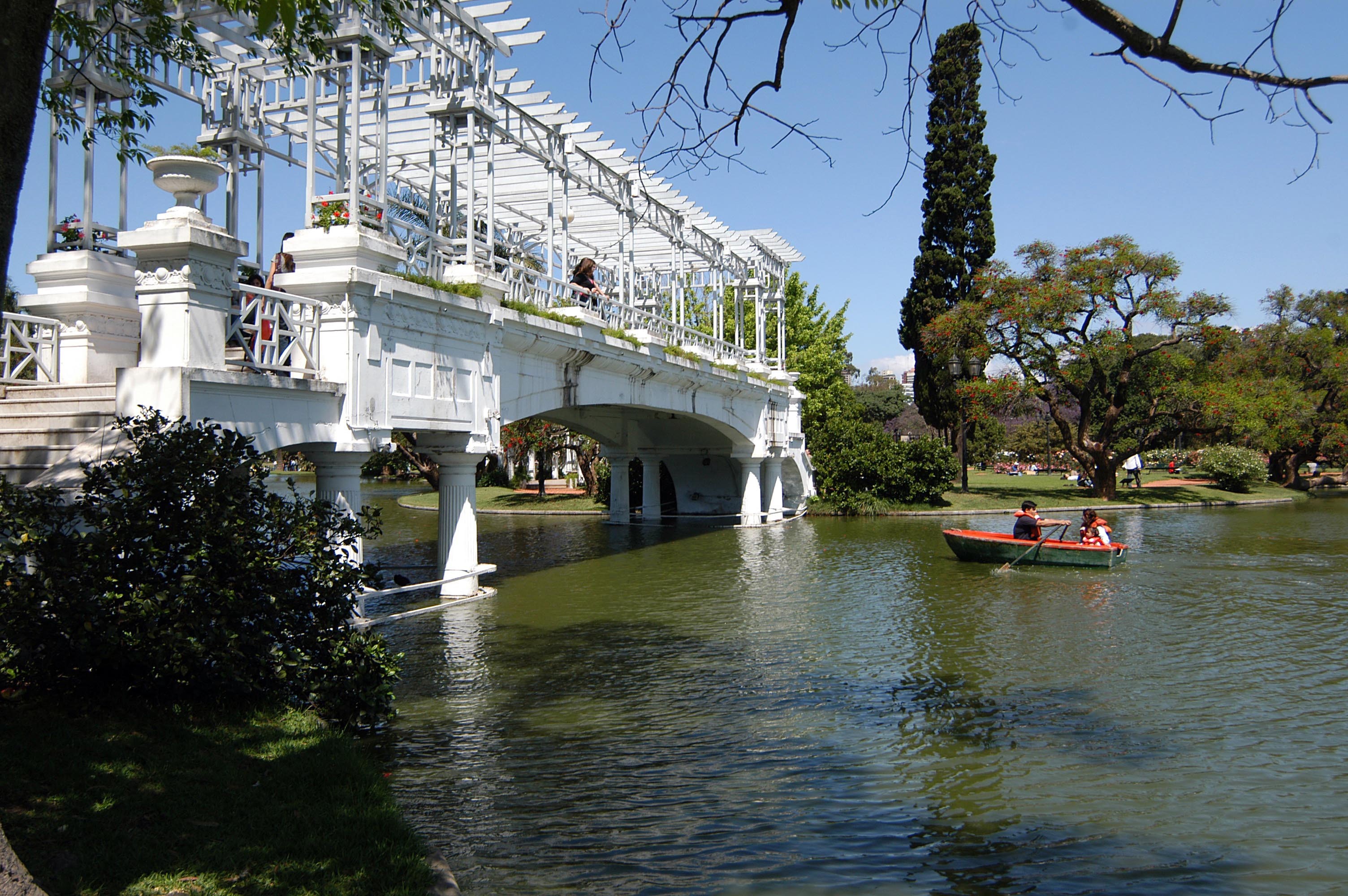

To experience the essence of Argentina’s urban splendor, you must indulge in the serenity of the top parks for tourists in Buenos Aires. These verdurous havens not only serve as a testament to the city’s French-influenced urban planning but also as invitations for you to write your own tales of leisure and discovery. So, lace up your walking shoes, charge your camera, and prepare to explore the must-see parks in Buenos Aires—each a chapter in the city’s open-air anthology of charm and respite.
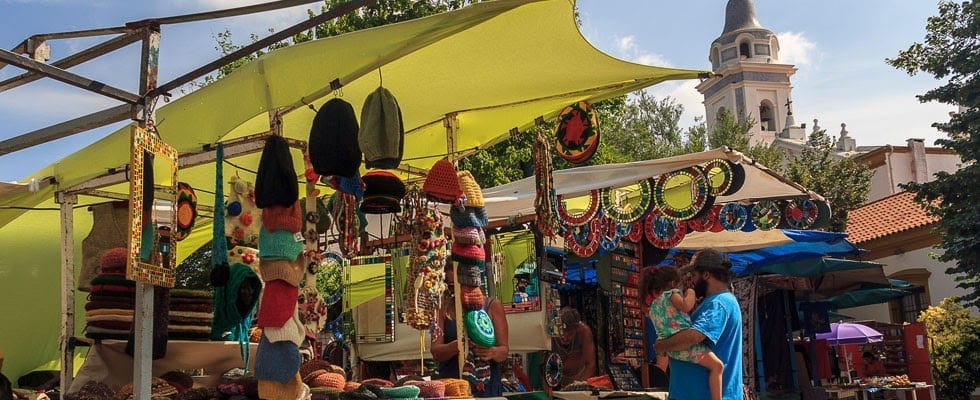

Gather your picnic baskets and your sense of wonder as we guide you through the best outdoor spaces in Buenos Aires, where every corner promises an unforgettable outdoor experience, botanical splendor, and opportunities to soak in cultural sites within leafy sanctuaries—each with a distinct narrative waiting to unfold within the city’s dynamic rhythm.
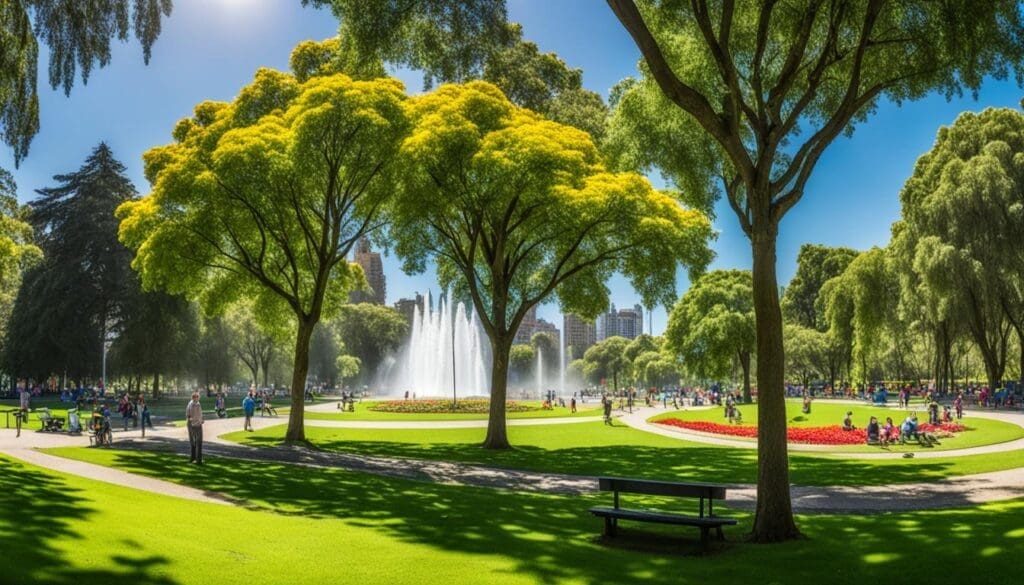

Tres de Febrero Park: A Hub for Leisure and Nature
Enclosed within the bustling city of Buenos Aires, Tres de Febrero Park, a paramount example of outdoor parks in South America, is a sanctuary of peace and natural splendor. Known as the renowned Bosques de Palermo, this urban green space is not just one of the top-rated parks in Buenos Aires but serves as a cornerstone for the juxtaposition of serene greenery within the dynamic urban landscape.
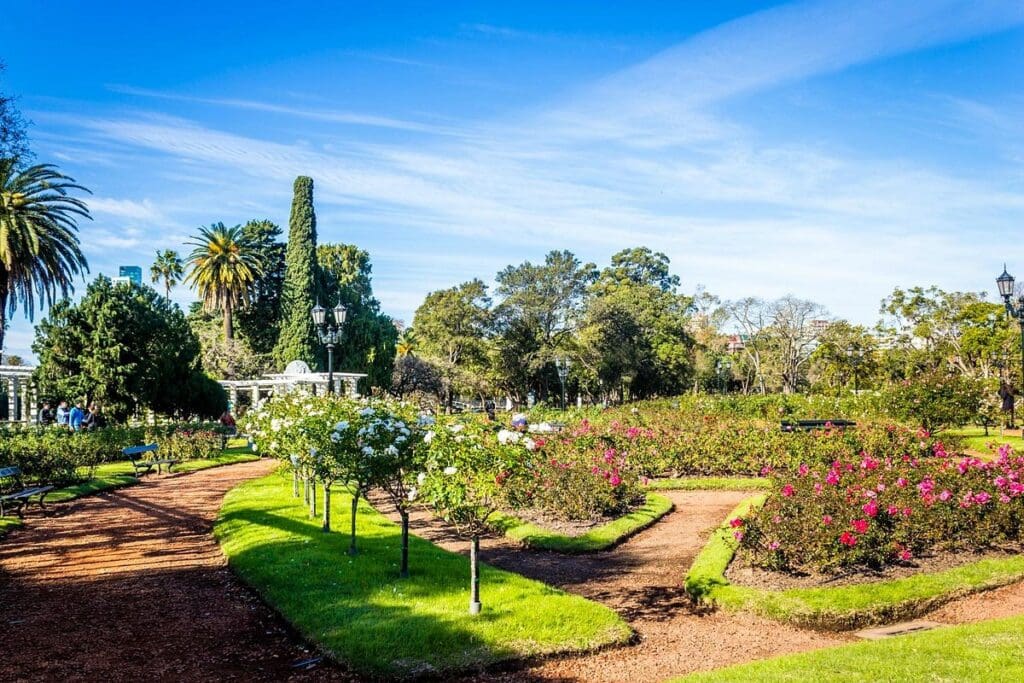

The Expansive Beauty of Bosques de Palermo
In the heart of the park, you’ll find the embodiment of nature’s artistry – Bosques de Palermo. With an intertwined network of verdant trees, serene lakes, and meandering pathways, this lush oasis offers locals and visitors alike a chance to immerse themselves in one of the city’s finest urban green spaces.
Discover the Rosedal’s Aromatic Delights
The Rosedal garden is a feast for the senses, where the fragrance of over 8,000 roses fills the air. This rose garden boasts an impressive collection featuring more than 90 species, presenting a kaleidoscopic array of colors and scents that beckon nature lovers throughout the year.
Jardín de Los Poetas: A Literary Escape
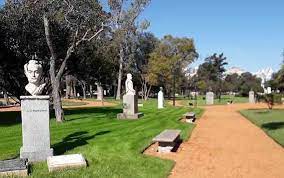

As you stroll through the verdant avenues of Tres de Febrero Park, the Jardín de Los Poetas provides a unique literary retreat. Here, the busts of esteemed authors stand as an homage to the literary greats, adding a touch of intellectual legacy to the park’s diverse attractions.
Engaging Activities and Seasonal Events
The energy and spirit of Buenos Aires are palpably felt within the bounds of Tres de Febrero Park, with an array of activities and events. From lively city fairs to the sounds of live jazz drifting on the breeze, the park is an ever-changing canvas of cultural expression.
- Jogging and cycling routes
- Picnic areas with vibrant flora
- Live performances and cultural gatherings
- Food truck festivals and craft fairs
Open daily and welcoming to all, Tres de Febrero Park remains a testament to the city’s dedication to creating and maintaining spaces where nature and culture harmoniously coexist.
Jardín Japonés: A Peaceful Japanese Retreat in the City
In the heart of the vibrant Argentine capital, Jardín Japonés stands out as one of the top green spaces in Argentina, epitomizing the balance between serene urban nature spots and the surrounding metropolitan buzz. A creation of cultural dedication, this elegant piece of Japan in Buenos Aires is more than just a beautiful garden; it’s a bridge to an entire philosophy.
- Traditional Japanese Aesthetics: With its carefully arranged rocks, water features, and bridges, every element within the garden is a tribute to the minimalistic yet profound nature of Japanese design.
- Cultural immersion: The garden is not only a space for reflection but also a medium through which visitors can experience and appreciate the richness of Japanese culture.
- Serenity in the City: Amidst the perpetual motion of urban life, Jardín Japonés provides a sanctuary of calm, inviting visitors to pause and rejuvenate within its tranquil confines.
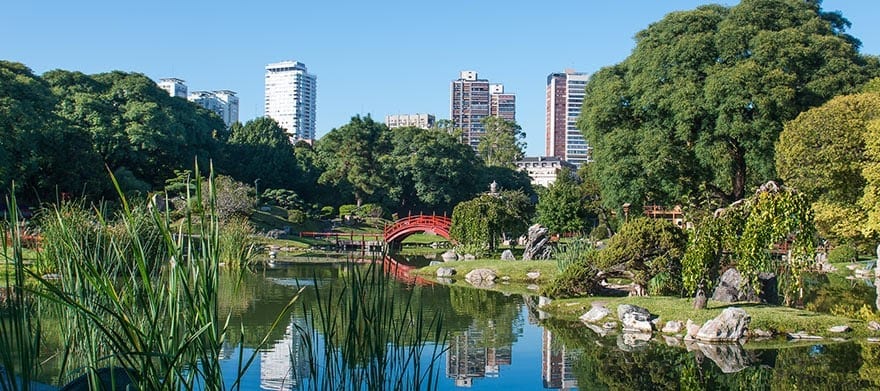

The transformative quality of Jardín Japonés is a testament to the thoughtful landscape architecture that defines beautiful gardens in Buenos Aires. Each aspect of the garden, from the graceful koi navigating the ponds to the stoic bonsai overseeing the meticulous paths, contributes to an atmosphere that can only be described as authentically Japanese.
| Feature | Description | Visitor Experience |
|---|---|---|
| Koi Ponds | Home to vibrant koi fish | Peaceful observation and reflection by the water |
| Bonsai Trees | Miniaturized yet majestic trees | Admiration of living art forms |
| Stone Bridges | Arched pathways across waterways | A journey through nature’s elements |
| Cultural Center | Hub for Japanese art and tradition | Engaging with heritage and learning |
| Sushi Restaurant | Culinary delights in an authentic setting | Tasting the fusion of natural ambiance and cuisine |
For those who have yet to visit this serene urban nature spot, Jardín Japonés awaits—not just as an attraction but as an invitation to traverse the globe without leaving Buenos Aires, to embrace a reverent approach to the natural world, and to enshrine moments of peace in the midst of city life.
Carlos Thays Botanical Gardens: A Plant Lover’s Paradise
Enveloped in the heart of Palermo with its lush foliage and tranquil walkways, the Carlos Thays Botanical Gardens present a botanical paradise amidst the urban landscape of Buenos Aires. A living gallery of plant species from around the world, this sensational urban nature spot in Argentina is a testament to both natural beauty and architectural elegance.
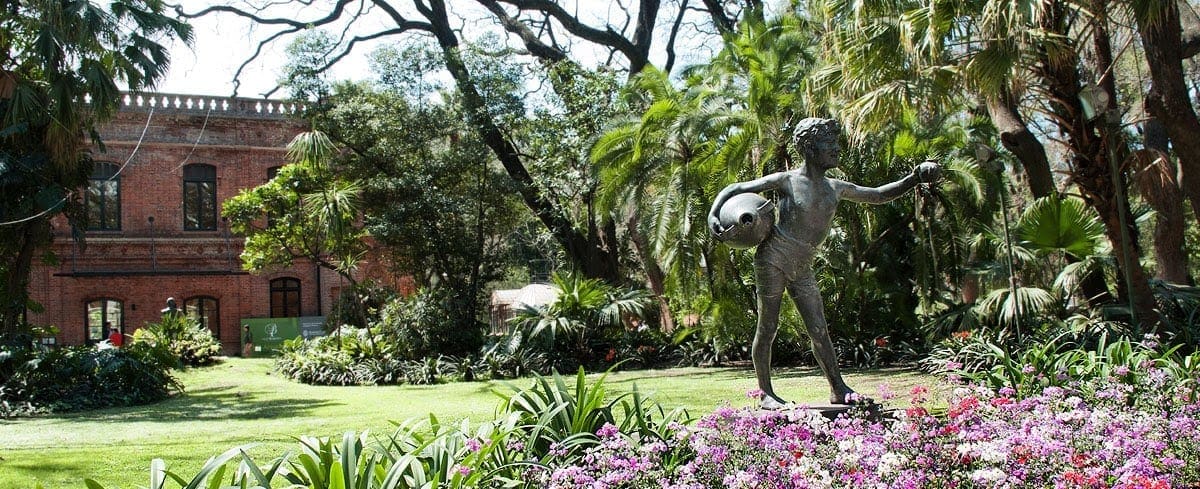

Diverse Flora and Fauna Collections
The Gardens boast a collection that spans continents, featuring approximately 6,000 plant species. From native Argentine specimens to exotic botanical imports, each section offers a unique perspective into the realm of horticulture. Visitors can stroll through meticulously curated French, Roman, and Oriental garden designs, each bringing its own story and sensory experience.
Architectural Elegance: Greenhouses and Museums
Complementing the natural splendor, the site is dotted with historically significant greenhouses and sculptures that marry greenery with grand design. The centerpiece is the striking five-domed Art Nouveau greenhouse, a symbol of the union between natural and man-made aesthetics. Alongside, the botanic museum and library serve as scholarly havens for those who seek a deeper understanding of botany.
Public and Cultural Events Amidst Nature
Year-round, the Gardens are a nexus for cultural engagement, with events that celebrate both local customs and international botanical knowledge. The serene ambiance of its open spaces makes the Carlos Thays Botanical Gardens among the best parks in Buenos Aires for public festivities, educational workshops, and leisure activities in pristine natural surrounds.
Reserva Ecológica Costanera Sur: A Nature Reserve in the Metropolis
Envision a serene haven within a stone’s throw of urban hustle, where the natural world thrives in astounding biodiversity. The Reserva Ecológica Costanera Sur is precisely that—a breath of fresh air and one of the top outdoor attractions in Argentina. As an essential urban green space situated in the prestigious Puerto Madero district, it’s a sanctuary where nature and city life harmoniously intersect.
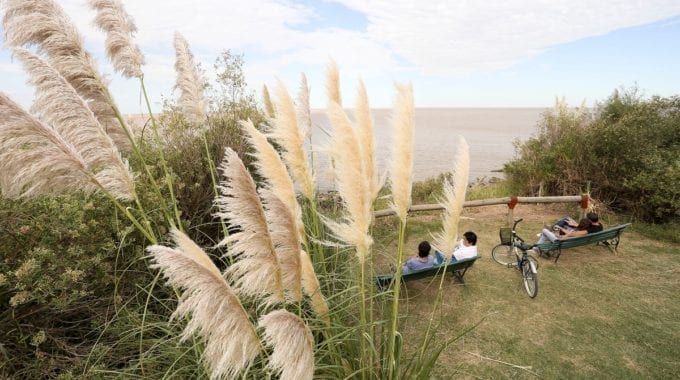

This ecological nature reserve extends its lush landscapes and rich ecosystems as an invitation to adventurers and tranquility seekers alike. Hosting an impressive array of over 200 bird species, the reserve provides an unrivaled opportunity for birdwatching, cementing its status as a cherished gem among urban green spaces. It’s not just the birds that captivate the visitors; the myriad indigenous wildlife adds to the ecological tapestry, making every stroll through the reserve an encounter with untamed splendor.
- Flora and fauna tours available in Spanish and English
- Bicycle rental for exploring expansive trails
- Tranquil spots for picnicking and relaxation
- Free access to the public, fostering inclusive leisure
Whether meandering along its well-trodden paths or venturing into the less-traveled corners, the intricate balance between conservation and recreation is palpable. As the Reserva Ecológica Costanera Sur beckons with open vistas and hidden enclaves, it stands out as a testament to the transformative power of urban green spaces. A visit here isn’t just a walk in the park—it’s an immersive journey through one of the finest ecological nature reserves that Argentina proudly preserves.
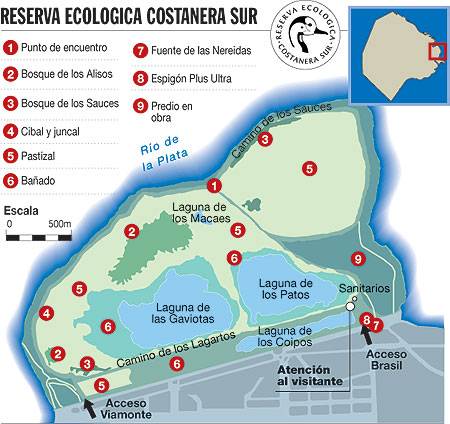

Barrancas de Belgrano: A Green Oasis in an Upscale Neighborhood
Barrancas de Belgrano, known for its serene atmosphere and commemorative bandstand, stands out as one of the most beautiful outdoor areas in Buenos Aires. As an essential destination in any Buenos Aires park guide, this spot beckons with the promise of pastoral delight amidst the city’s urban fabric. The iconic neighborhood of Belgrano frames the park’s lush landscapes, where the community bond comes to life through the universal language of tango and music. Visitors can practice their dance steps or simply enjoy the harmonious blend of culture and relaxation provided by this verdant retreat.
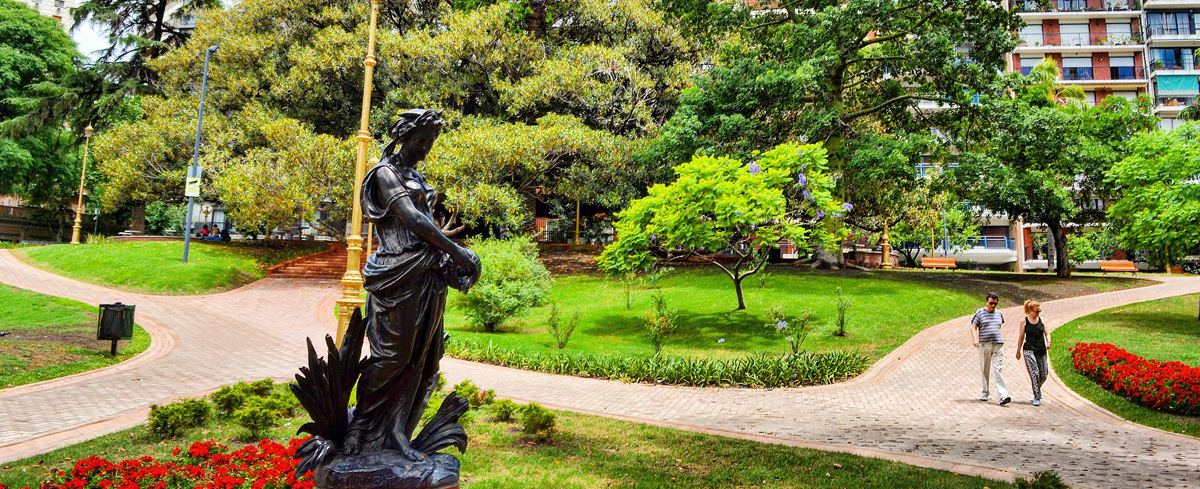

Whether seeking an urban adventure or a peaceful retreat, the urban park attractions at Barrancas de Belgrano cater to a diverse array of interests. For those keen on embracing the local cultural scene, the park is a dynamic stage for folk performances and impromptu gatherings, reinforcing its reputation as a treasured bastion of Argentine leisure.
As dusk settles and the city lights begin to twinkle, Barrancas de Belgrano transforms into a mesmerizing encounter with Buenos Aires’ night sky. It is here that the urbanite’s quest for nature intertwines with the pursuit of creative expression, offering a unique confluence of experiences rooted in this distinguished neighbourhood’s embrace.
Parque Centenario: A Celebration of Argentine Independence and Recreation
Amidst the urban canvas of Buenos Aires lies Parque Centenario, a verdant tribute to Argentina’s rich history and its journey towards independence. An idyllic example of the top nature spots Buenos Aires has to offer, the park beckons visitors with its inclusive embrace of recreation, education, and historical significance, serving as one of the premier outdoor attractions Buenos Aires showcases to both locals and tourists.
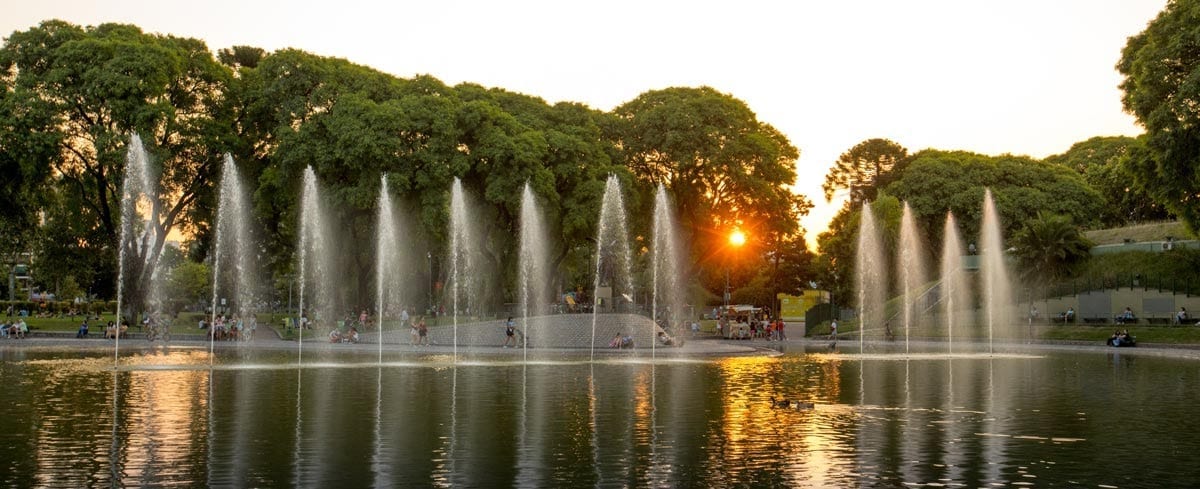

As we delve into the park’s offerings, one can appreciate the perfect blend of leisure and learning. The park’s infrastructure is built around a central lake, which not only enhances the beauty of the area but also serves as a focal point for community gatherings and Argentine independence celebration events.
Outdoor Facilities
- Lake with picturesque scenery
- Well-equipped outdoor gym for fitness enthusiasts
- Football field for sports activities
Cultural and Educational Sites
- Argentine Museum of Natural Sciences – a nexus of knowledge and wonder
- Eva Peron Amphitheater – home to enlightening cultural events
Every weekend, the park transforms, becoming a hive of artisanal creativity and literary promise with its renowned arts and crafts fair, accompanied by a treasure trove of second-hand book stalls.
| Recreation Activities | Educational Venues | Cultural Events |
|---|---|---|
| Outdoor gym sessions | Natural Sciences exhibits | Independence day celebrations |
| Aquatic enjoyment on the lake | Interactive science displays | Theatrical performances at the amphitheater |
| Sunday family picnics | Geology and paleontology talks | Weekend arts and crafts market |
Open to the public throughout the year, Parque Centenario stands as a living monument to the unyielding spirit of Argentine independence, offering a circular refuge from the bustling city life—a testament to the harmony possible between a city’s historical fabric and its modern-day pursuits.
The Plazas of Recoleta: Multifaceted Spaces for Leisure and Culture
Discover the Plazas of Recoleta, some of the most beloved beautiful parks Buenos Aires has to offer. These vibrant urban nature spots in Argentina epitomize the fusion of leisure and culture, making them some of the best green spaces in Buenos Aires. Within the sprawling city, they present a welcoming variation of peace and communal joy, rightfully earning their place as top public parks.
The Floralis Generica: A Modernist Floral Sculpture
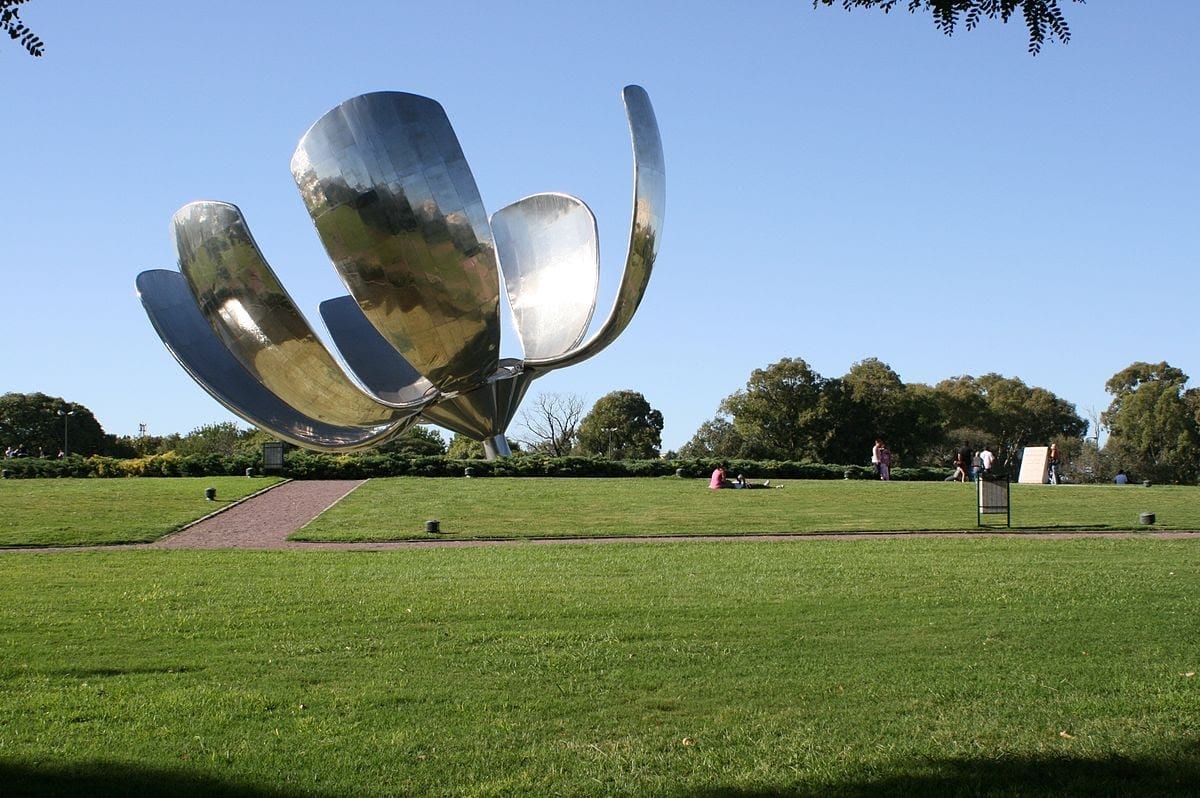

The Plaza de las Naciones Unidas claims fame to the Floralis Generica, a modern sculpture that rises from the plaza grounds as a glistening symbol of hope and renewal. Its petals, engineered to move, mimic the daily cycles of nature, thus providing an ever-changing backdrop against the sky of Buenos Aires.
Cultural Festivities at Plaza Uruguay
Plaza Uruguay is not merely a space but a cultural canvas that comes to life with festivals and events. Showcasing the city’s rich tapestry of traditions, the plaza lets visitors immerse themselves in a vivacious ambience, filled with dance, music, and a mosaic of food offerings.
Arts and Crafts at Plaza Francia
On weekend strolls, one can drift into Plaza Francia, a bustling center where creativity flourishes at every corner. Artists and craftsmen converge to display their unique creations, transforming the plaza into a treasure trove for those seeking handcrafted keepsakes and a touch of local artistry.
Rosedal: An Idyllic Landscape of Colorful Blossoms
Immersed in the heart of Palermo’s urban oasis, Rosedal garden captivates visitors with its intoxicating blend of color and fragrance. Recognized as one of the top green spaces Argentina has to offer, Rosedal offers a tapestry of pastels against the city’s skyline, making it a premier destination among scenic public gardens Buenos Aires. Here, the allure of nature merges with the social tapestry of urban living, creating a perfect symphony of tranquility and vibrancy.
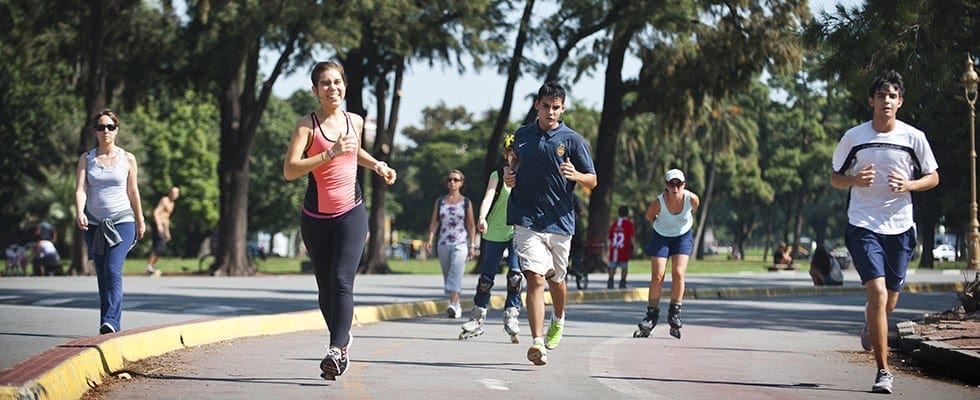

The garden’s meticulously curated rose beds, showcasing an impressive variety, are a testament to the dedication of its caretakers, and serve as a backdrop for countless moments of serenity and romance. Amid these blooms, a network of pathways invites an array of activities, solidifying Rosedal’s status as a cherished urban green space. Whether you indulge in a leisurely stroll or embrace the energy of a morning jog, the garden accommodates all paces of life.
- Morning Yoga amidst Floral Abundance
- Outdoor Painting Sessions inspired by Natural Beauty
- Sunset Walks along Lake Edges
The integration of art and nature is further emboldened during seasonal events when Rosedal transforms into a stage for cultural showcases and communal celebrations. Meticulously planned and cared for, Rosedal stands out as a jewel among Buenos Aires’ bustling urban life, embodying the essence of beauty and serenity. This enclave of natural splendor invites both locals and tourists to pause and revel in the joy of the present moment amidst a stunning display of horticulture.
| Season | Rose Varieties | Activities |
|---|---|---|
| Spring | Hybrid Tea Roses | Poetry Readings |
| Summer | Climbing Roses | Photography Workshops |
| Autumn | Miniature Roses | Live Music Performances |
| Winter | English Roses | Cultural Festivals |
Best Parks in Buenos Aires
The allure of Buenos Aires is magnified by its exquisite parks, each inviting visitors to delve into an urban sanctuary where resplendent scenery and rich cultural tapestries coalesce. The city’s green spaces are more than mere venues for recreation; they symbolize the exquisite harmony of nature and the vibrancy of Argentine culture, rendering them essential stops on every traveler’s itinerary. Whether seeking panoramic vistas or the tranquillity of a shaded knoll, the top parks in Buenos Aires promise captivating experiences for every visitor.
Scenic Views and Urban Respite in Bosques de Palermo
Scenic parks in Buenos Aires point invariably towards the verdant expanses of Bosques de Palermo, a tranquil bastion spanning several neighborhoods. This famous park in Buenos Aires is a living tableau, lush with winding lakes where one can enjoy leisurely boating or opt for the simple joy of sunbathing amidst rolling grassy mounds. A must-visit haven, it epitomizes the city’s passion for crafting spaces where people can commune with nature without stepping foot outside the metropolis.
Cultural Harmony in San Telmo’s Parque Lezama
Parque Lezama, nestled in the historic San Telmo district, stands as a testament to cultural harmony in Buenos Aires. Known for its storied past and as the beating heart of the neighborhood, the park serves as a refuge for artists, families, and historians alike. A mosaic of the city’s chronicles and the diversity of its people, Parque Lezama is a picturesque setting where time-honored traditions and community spirit resonate, mirroring the soul of Buenos Aires in every corner.
The Breathtaking Views of Plaza San Martin
Ascend to the heights of Plaza San Martin in Retiro for some of the most breathtaking views Buenos Aires has to offer. This famous park, woven into the fabric of national history, presents visitors with sweeping panoramas encompassing key landmarks that define the city’s skyline. The juxtaposition of historical splendor and natural beauty culminate in this one iconic spot, making Plaza San Martin an unmissable destination for anyone seeking the essence of Buenos Aires wrapped up in an unforgettable vista.
One of the greatest things about Buenos Aires is the vast amount of beautiful, world-class parks and lovely green spaces that are available to the public. On any given sunny day, you can find groups of porteños lounging while sipping mate, sunbathing, walking their dog, or skating through one of the city’s numerous and wonderful, leafy parks. As a large, metropolitan center, Buenos Aires is no stranger to the hubbub and commotion that comes with city life. To avoid feeling overwhelmed at times, one can take advantage of the escapes the city offers. Narrowed down from the 250 parks within the city’s limits, here is an introductory guide to the seven best green spaces in Buenos Aires.
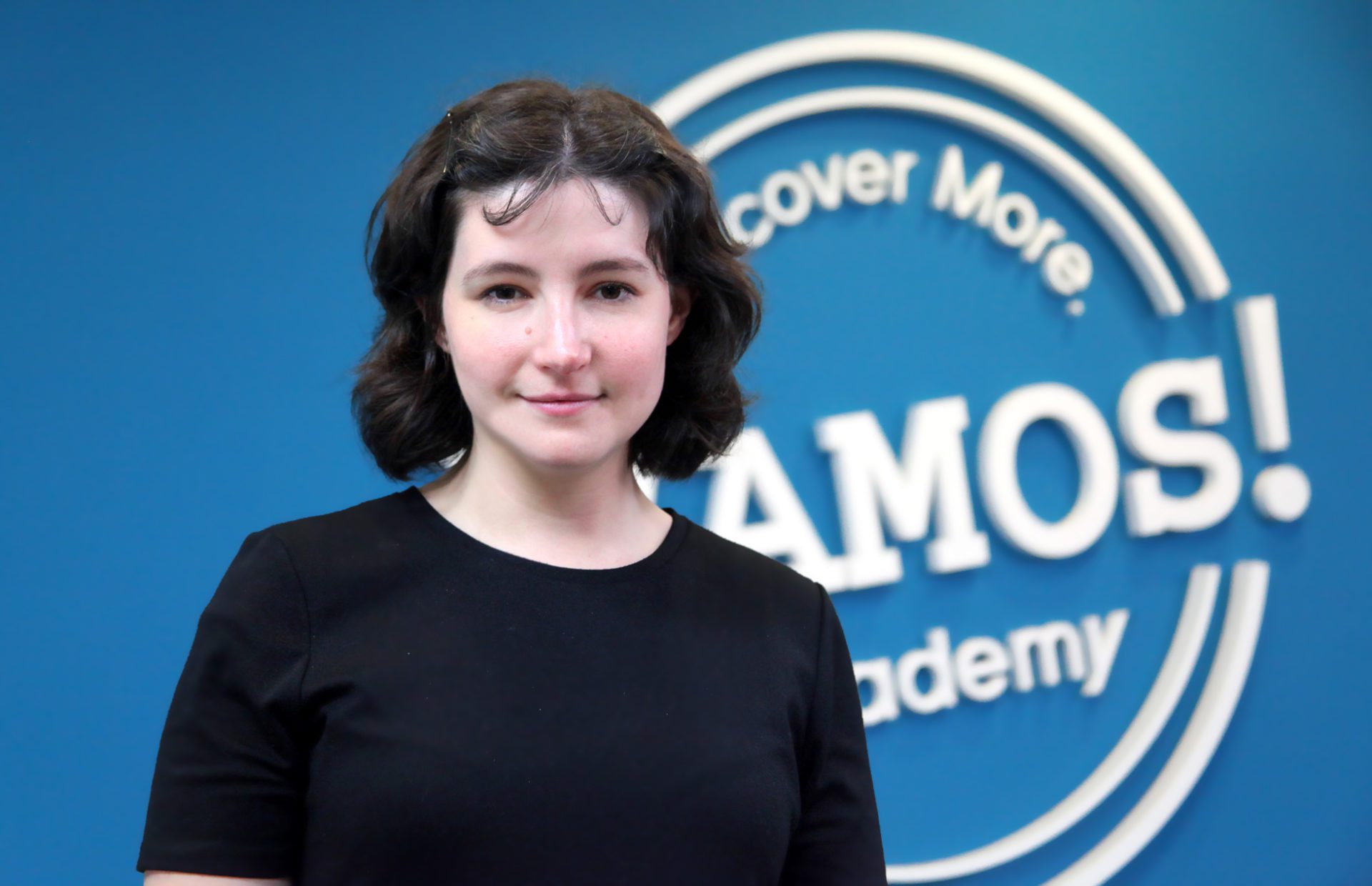

Maria Olson
At VAMOS Academy, I craft stories sprinkled with my love for exploration and food. Whether it’s the tang of a local dish or the rhythm of a new dialect, I bring these experiences to you. Ready for an adventure that tickles your taste buds and ignites your wanderlust? Let’s embark on this journey together, one story and one bite at a time.
For more information about other Parks in Buenos Aires or Spanish School in Argentina visit us at Viamonte 1516, Buenos Aires, Argentina [email protected]
Profesores de Ingles

